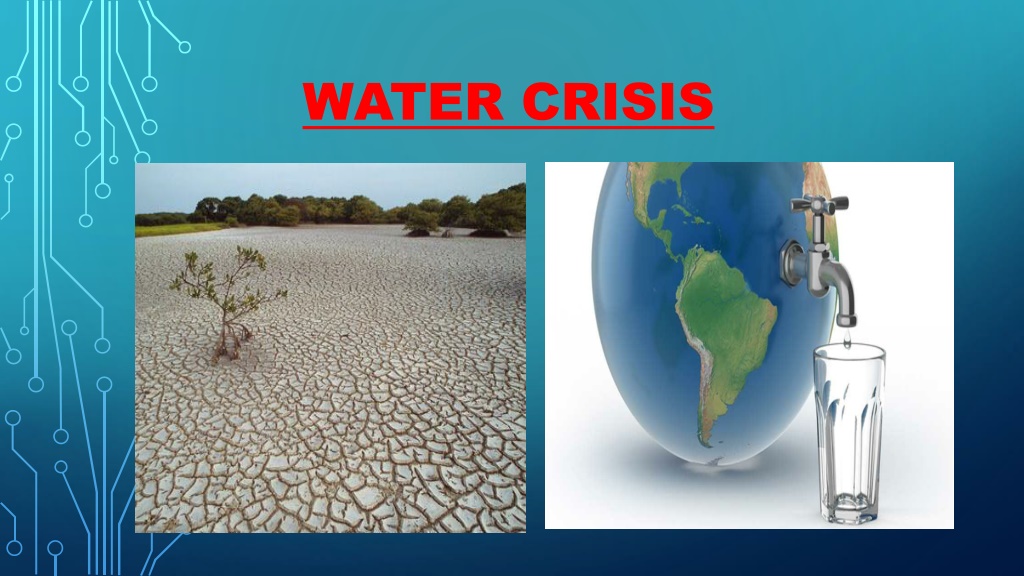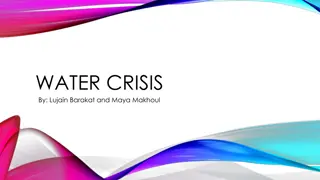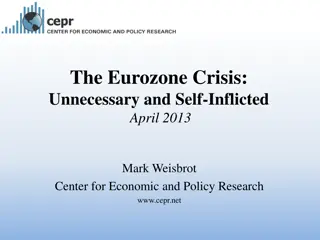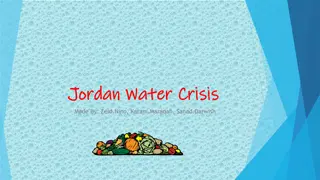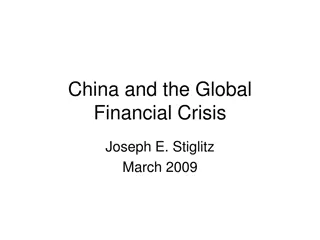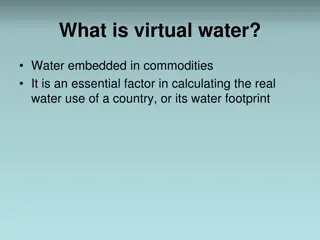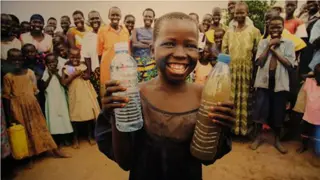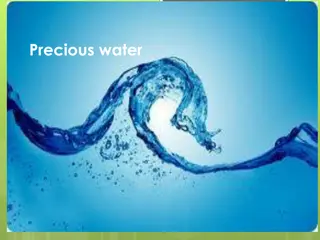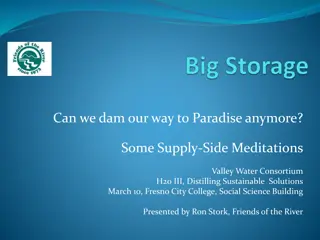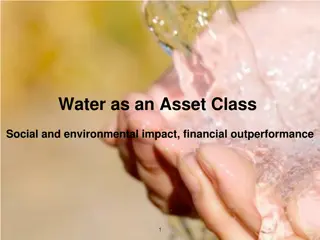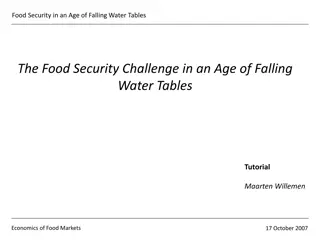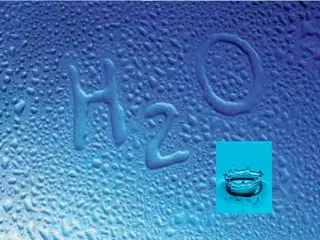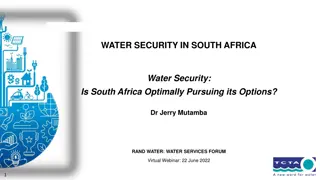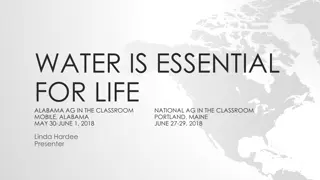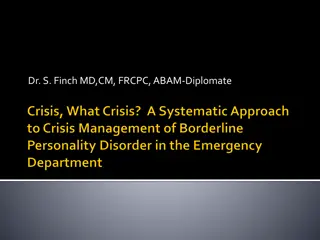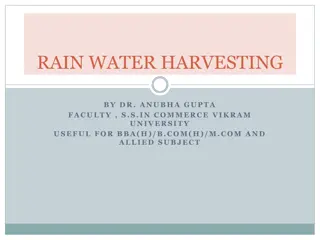Understanding the Global Water Crisis and Solutions
Water is a precious resource, with only 3% of the world's water being freshwater. The lack of access to clean water affects billions worldwide, leading to water-borne illnesses and even death. The Middle East faces a severe water scarcity issue due to natural factors and human activities, requiring innovative solutions. Desalination, wastewater treatment, and rainwater harvesting are among the ways countries like Jordan are addressing the crisis. Ensuring clean water access is vital for saving lives and improving communities worldwide.
Download Presentation

Please find below an Image/Link to download the presentation.
The content on the website is provided AS IS for your information and personal use only. It may not be sold, licensed, or shared on other websites without obtaining consent from the author. Download presentation by click this link. If you encounter any issues during the download, it is possible that the publisher has removed the file from their server.
E N D
Presentation Transcript
INTRODUCTION Water covers 70% of our planet, and it is easy to think that it will always be plentiful. However, freshwater the stuff we drink, bathe in, and irrigate our farm fields with is incredibly rare. Only 3% of the world s water is freshwater, and two-thirds of that is tucked away in frozen glaciers or otherwise unavailable for our use. As a result, some 1.1 billion people worldwide lack access to water, and a total of 2.7 billion find water scarce for at least one month of the year. Inadequate sanitation is also a problem for 2.4 billion people they are exposed to diseases, such as cholera and typhoid fever, and other water-borne illnesses. Two million people, mostly children, die each year from diarrheal diseases alone.
Water Crisis Nationally Nationally And Globally & Reasons The scarcity of water in the Middle East is primarily caused by natural factors, such as limited rainfall and high temperatures, but also by human activities, such as overexploitation of groundwater resources and inefficient irrigation practices. Groundwater is a critical source of water in the region, but it is being depleted at an alarming rate. In addition, climate change is exacerbating the problem by leading to more frequent and severe droughts. Overall, the water crisis in Jordan is a complex issue that requires a multifaceted approach, including scientific innovation and technological advancements. It's inspiring to see how science can be used to address real-world problems and improve the lives of people around the world.
It's fascinating to consider how science has revolutionized our understanding of the natural world and the incredible advances that have been made in various fields. When it comes to the topic of water, one interesting fact is that Jordan is one of the most water-scarce countries in the world, with limited natural water resources and a rapidly growing population. However, Jordan has been able to address this crisis through innovative solutions, such as desalination plants, wastewater treatment, and rainwater harvesting.
Suggested Solutions Give people water is the simplest solution to water scarcity: (Mind-blowing, we know.) We need to provide clean, safe water to those who need it most. Water trucking is one of the quickest short-term solutions to a shortage, whether it s bringing in water to a refugee camp while infrastructure in the area is improved, or delivering it to communities during a drought. This is an expensive solution and not a long-term fix for a crisis; but it can be life-saving. Desalination involves the process of removing salt and other minerals from seawater, making it safe for human consumption. In Jordan, the Aqaba Desalination Plant, located on the Red Sea, has been supplying fresh drinking water to the city of Aqaba and its surrounding areas since 1997. Wastewater treatment plants have been built to recycle water for agricultural use. A Rainwater Harvesting System is one of the lowest-tech and lowest-cost solutions to water scarcity in regions that get enough rainfall. The system does exactly what the name implies: to collect and save rainwater. Using a catchment surface when it rains (a specially-prepared and designated area to collect water), it can collect water for storage and future use. Such systems can be installed in schools and other public buildings.
Conclusion Water use has grown at more than twice the rate of population increase in the last century. By 2025, an estimated 1.8 billion people will live in areas plagued by water scarcity, with two-thirds of the world's population living in water-stressed regions as a result of use, growth, and climate change. The challenge we now face as we head into the future is how to effectively conserve, manage, and distribute the water we have.
Citation & Resources Prepared By HTTPS://WWW.CONCERNUSA.ORG HTTPS://ASKAICHAT.APP AWN SWEISS ABDULRAHMAN TUBEILEH MICHAEL MADANAT YAZAN KHOURY HTTPS://UNWATER.ORG HTTPS://THEWATERPROJECT.ORG
